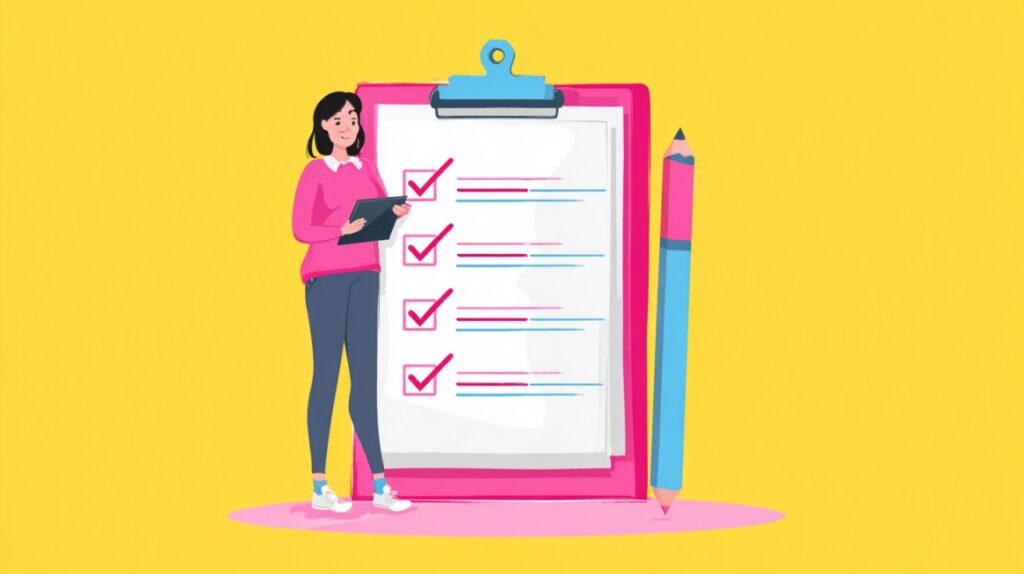
Choosing the right insurance solution plays an important role in financial stability.
It can protect health, property, income, and other valuable aspects of life while offering confidence when facing unexpected events.
Steering between policies and providers can be challenging, so following a structured process helps ensure the decision aligns with personal needs and circumstances.
That is why we want to talk about this in greater detail.
1. Assess Your Needs and Risk Exposure

Evaluating insurance begins with a clear picture of what truly needs protection.
The step sets the foundation for all future choices and helps avoid unnecessary expenses.
Consider both tangible and intangible assets and how their loss could affect financial stability. Look at current lifestyle, obligations, and future goals.
For instance, a homeowner with dependents may require a different level of protection than a single person renting an apartment.
- Type of protection required:
- Health
- Life
- Home
- Business
- Travel
- Combination
- Personal circumstances such as existing health conditions, frequency of travel, and property ownership.
- Likelihood of risks like illness, accident, or natural disaster, and their potential financial consequences.
- The ability to self-insure through savings or investments versus relying on external coverage.
Defining these elements in detail focuses the search for policies that meet actual needs while avoiding unnecessary premiums.
2. Evaluate Cost vs. Coverage Value

An attractive premium might seem beneficial at first glance, but value lies in how a policy performs during real-life claims.
The focus should remain on balancing affordability with the quality of coverage.
- Response in scenarios such as hospital stays, property damage, or theft.
- Hidden costs like administrative fees, co-payments, or exclusions that reduce benefits.
- Added value in higher-cost plans, including faster claim processing or larger payouts.
Short-term affordability should never compromise long-term security.
For example, individuals seeking private health insurance advice often weigh not just the premium but also the potential out-of-pocket expenses during major health events.
It ensures they are protected without unexpected financial strain.
3. Explore Alternative Risk Management Strategies

For those interested in expanding their risk management toolkit beyond traditional insurance, The Ultimate Guide to Navigating Health Industry Franchising Law offers invaluable legal insights into franchising within the health sector.
Insurance serves as a valuable safety net, yet it is not always the only or most cost-effective method for managing risk. In many situations, proactive financial and lifestyle strategies can lower exposure to hazards or even remove the need for certain policies altogether.
Building a strong emergency fund is often the first step in this direction.
A reserve equal to several months of living expenses can cover unexpected costs such as urgent home repairs, medical bills, or temporary loss of income without relying on claims or premium payments.
Government programs provide another layer of potential protection. These may include healthcare subsidies, unemployment benefits, disaster assistance, and public pension schemes.
While they might not fully replace private insurance, they can significantly reduce the need for certain types of coverage, especially in countries with well-established social safety nets.
Employer-provided benefits also deserve close attention. Many companies offer health, dental, disability, or life insurance as part of the employment package.
Taking full advantage of these benefits can fill coverage gaps without incurring extra costs.
Employees who understand their workplace coverage limits can make more informed decisions about whether to purchase additional private policies.
4. Research and Shortlist Insurance Providers

Finding the right provider involves more than just searching for the lowest price.
Reliability, claims handling, and specialization play a large role in satisfaction over time.
Personal recommendations can offer insight, while online reviews help evaluate service quality and performance during claims.
- Financial strength and ability to pay claims.
- Efficiency and transparency in claims processing.
- Customer service quality based on independent reviews.
- Specialization in the type of coverage you require.
Insurance brokers can simplify research, but their access may be limited to specific providers.
Balancing their expertise with a broad market view ensures better decision-making.
5. Review Policy Options in Detail

Request complete policy documents before making decisions. Carefully examine inclusions and exclusions, ensuring that coverage addresses the most likely risks.
Assess benefit limits, maximum payouts, and waiting periods to determine adequacy. Look into renewal terms to confirm the stability of coverage over time.
Understand the claims process, including required documentation and timelines.
Watch for vague or overly technical wording that could complicate future claims. A thorough review helps avoid unpleasant surprises when protection is most needed.
6. Ask Questions and Seek Clarifications

Direct communication with insurers or brokers is essential for eliminating doubts.
Prepare a list of questions targeting both general and specific aspects of the policy.
Make sure to address coverage scope, claim documentation, and customization options.
- What events are explicitly covered and excluded?
- Which documents are mandatory for claims?
- Can coverage be adjusted over time?
Always request answers in writing. Documentation of discussions protects against future disputes and ensures both parties have the same expectations.
7. Prepare for the Worst-Case Scenario

Readiness for an emergency starts with organized records and a clear process.
Store policies, claim forms, and proof of ownership in a secure location such as encrypted cloud storage or a locked physical file.
Familiarize yourself with the timeline for reporting claims and the evidence required.
- Knowing which events trigger claims.
- Have a full understanding of reporting deadlines.
- Collecting proof in the form of photos, medical records, or police reports.
- Testing the process through a simulated emergency to identify gaps.
This preparation ensures that in a real crisis, time is spent resolving the problem rather than searching for paperwork.
8. Use a Decision Matrix (Optional but Helpful)

A decision matrix can make complex comparisons easier. Create a table listing each policy alongside must-have coverage points.
Include premium costs, benefit amounts, claim processing speed, and service ratings.
Highlight significant differences to visualize strengths and weaknesses.
Such a tool can support a rational, evidence-based decision and make it easier to justify the choice to family members or business partners.
The Bottom Line
Choosing an insurance plan becomes much simpler when following a clear process.
By assessing risks, researching providers, carefully reviewing policies, and preparing for possible emergencies, it is possible to secure coverage that meets current and future needs.
Asking the right questions, weighing costs against value, and keeping thorough records can turn a complex task into a confident decision.
A well-chosen policy offers protection, stability, and reassurance in times of uncertainty.



